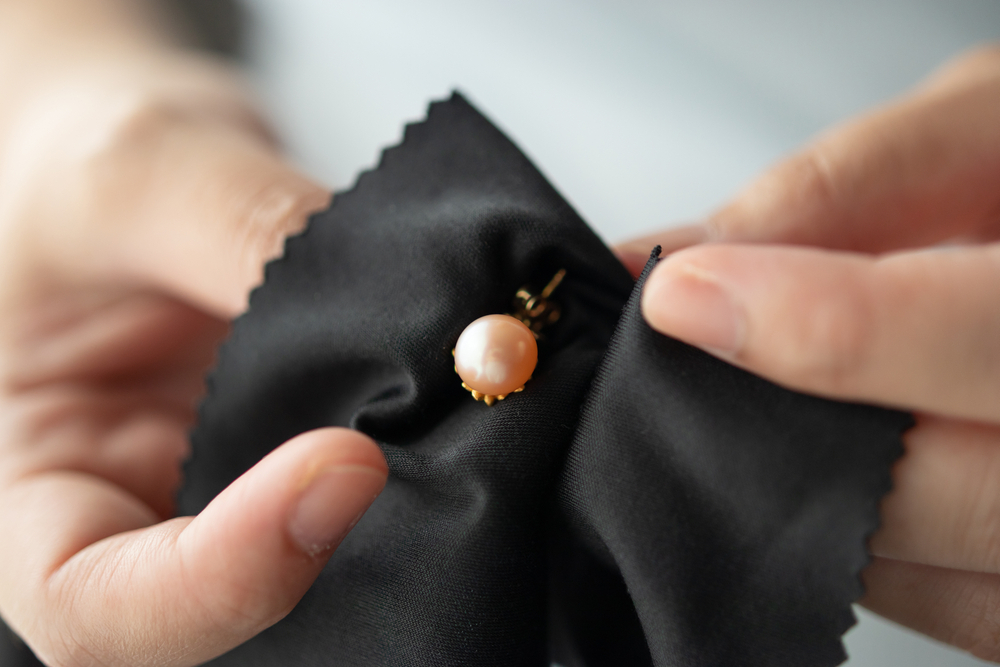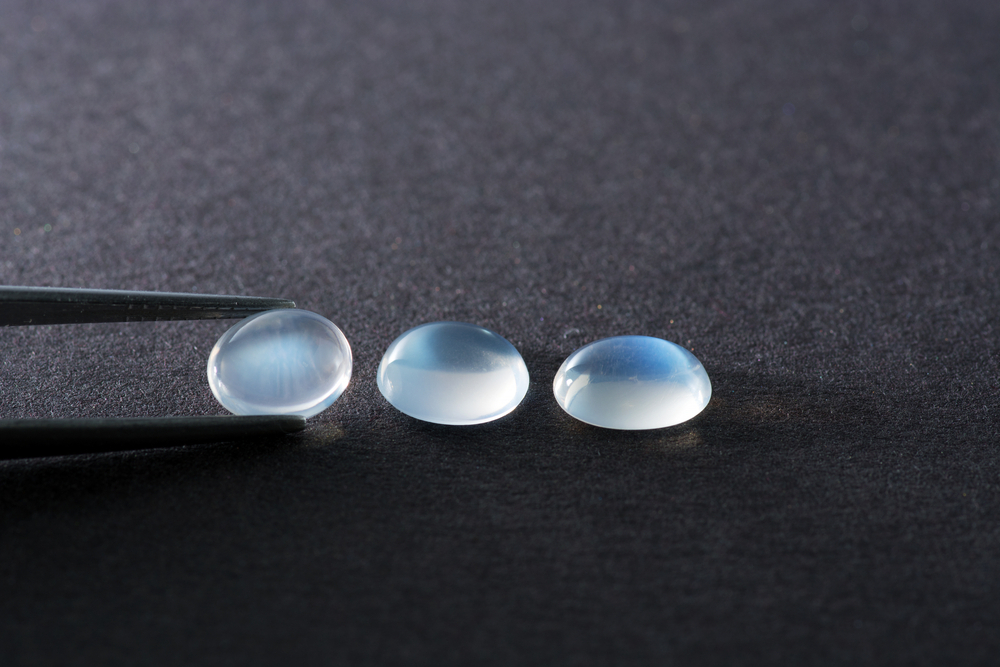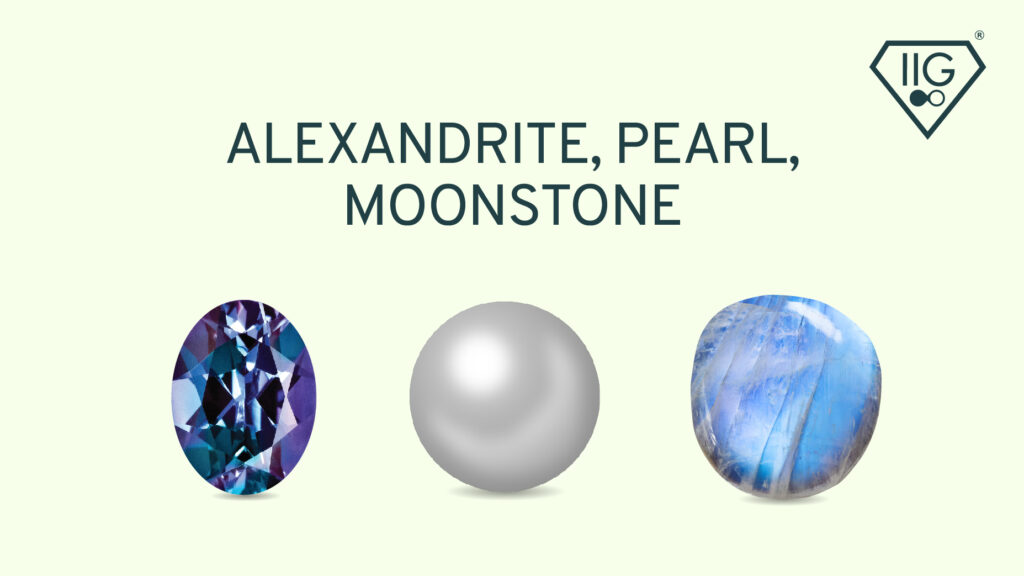|
Getting your Trinity Audio player ready...
|
Born in June? You are fortunate enough to have three birthstones to call your own. June features three birthstones (Pearl, Moonstone and Alexandrite), each of which is spectacular in its way. Each of the three June birthstones has its unique meaning. The birthstones moonstone and alexandrite are the latest additions to the list. Alexandrite, like pearls and moonstones, has a significant history, although Alexandrite is a relatively new gem. In fact, in the last few years, it has gotten a lot more attention.
Read the entire article to know in detail about your birthstones.
Pearl:
The only jewels created by living organisms are pearls. Molluscs create pearls by forming calcium carbonate layers around minute irritants that become caught in their shells, rather than a grain of sand as is often assumed.
Purity, humility, and innocence have traditionally been associated with pearls. As a result, the June birthstone has the meaning of “sweet simplicity.” As an outcome, pearls have often been presented as a wedding gift.
History of Pearls:

Pearls have been worn as jewellery for generations, dating back to ancient Greece when pearls were thought to be the tears of the gods. In the sarcophagus of a Persian princess who died in 520 BC, the oldest known pearl jewellery was discovered.
Natural pearls were so precious that only the wealthiest lords could afford them throughout history. Only the emperor was permitted to wear these priceless diamonds during the Byzantine Empire. Ancient Egyptians were frequently buried with their most valuable possessions, such as pearls.
The popularity of the stone among the upper class during the sixteenth century earned Tudor England the moniker “Pearl Age.” Royals were photographed wearing pearl jewellery and pearl-encrusted garments.
When the first commercial saltwater pearl cultivation occurred in Asia in the early 1900s, pearls became more accessible. Cultured pearls have nearly totally supplanted genuine pearls on the market since the 1920s, making this classic gemstone accessible to almost any budget.
Characteristics of Pearls:
The way a pearl reflects light from both its surface and its many layers within is one of its most attractive features. The term “lustre” refers to a pearl’s light-reflecting properties as well as its deep-seated brilliance. Pearls might have small textural variations and blemishes because they are natural goods. Pearls come in a variety of shapes, with perfectly round pearls being the rarest and most precious. The shape of a pearl is influenced by a range of factors, including the type of mollusc that creates it and the variety of nature. While we commonly think of pearls as being white, they come in a variety of colours, depending on the mollusc species that produce them. The size of a pearl is measured in millimeters (mm).
Cleaning and Care of Pearls:

Pearls have a Mohs hardness of 2.5 to 3.0, making them a relatively soft gem that requires special care. To avoid scratches, keep them separate from other gemstones and metal jewellery. Never put your pearl birthstones in a plastic bag since plastic emits a chemical that can harm the surface of the stone. Before putting on your pearl jewellery, always use perfume, hair products, and makeup. Use a soft, wet towel to clean your June birthstone, ideally, after each time the pearls are worn.
Moonstone:
Moonstones are gorgeous and mystical gems that are historically mined in Sri Lanka. The clear colour and adularescence, or blue shine, of these original moonstones, are well-known. Moonstones can be found in other places of the world, including India, however, they are usually brown, green, or orange in hue. We relate the moonstone with Gemini’s zodiac sign and the traits of love in the astrological chart and the qualities of love, passion, and fertility.
History:

Since ancient civilizations, the moonstone has been utilized as a gorgeous decoration and a strong talisman. It was admired by the Romans, who thought it was made of moonbeams. Moonstone was connected with their lunar deities by both the Romans and the Greeks.
Pliny the Elder, a Roman natural historian, gave the gemstone its name when he stated that the shimmering aspect of the moonstone changed with the phases of the moon, a belief that persisted until long after the sixteenth century.
Designers used moonstone in personalized jewellery while Art Nouveau was prominent between 1890 and 1910. During the Arts and Crafts era in the latter half of the nineteenth century, it was also used in handcrafted silver products.
Moonstone remained popular with hippies in the 1960s and designers in the 1990s New Age movement.
Although moonstone is neither naturally found in Florida nor on the moon, Florida designated moonstone as its official state gemstone in 1970 to celebrate the Apollo 11 moon landing and other space flights launched from the state.
Moonstone has been valued for millennia and is still widely available today. In regions of the world like Germany and Scandinavia, it’s the chosen June birthstone over pearl and alexandrite.
Characteristics of Moonstone:

The fluctuating fluorescence and mesmerizing blue-white colour brilliance of the moonstone have been attributed to the moon’s mystical characteristics. Moonstone is a type of mineral that is created by potassium aluminum silicate and belongs to the orthoclase feldspar group. The presence of adularescence distinguishes this stone from others of its kind. Due to its unique layered architecture, Moonstone reveals a remarkable optical phenomenon. The mystical effect of light diffraction inside the layers of its microstructure provides a shifting blue shine. Moonstone also has a cat’s-eye effect.
Care and Cleaning:
Moonstone is a soft stone with a Mohs hardness of 6–6.5 and a low toughness. When exposed to extreme heat, it may crack. Ultrasonic and steam cleaners should therefore be avoided when cleaning your moonstone. Warm, soapy water and a soft brush are the best cleaning options.
Alexandrite:
Alexandrite is a rare chrysoberyl type that changes colour depending on the sunlight. Alexandrite birthstones with a vibrant green to blue-green colour in daylight or fluorescent light and an intense crimson to purple red colour in incandescent light are the most coveted.
History:
 Alexandrite was first discovered in emerald mines near the Tokovaya River in the Ural Mountains during Imperial Russia and had a tumultuous history. Its Finnish discoverer initially mistook it for an emerald before noticing that it changed hues depending on the light source.
Alexandrite was first discovered in emerald mines near the Tokovaya River in the Ural Mountains during Imperial Russia and had a tumultuous history. Its Finnish discoverer initially mistook it for an emerald before noticing that it changed hues depending on the light source.
This gemstone was called after Alexander II, according to folklore, because it was discovered on the future czar’s birthday in 1834. Alexandrite became the national gemstone of Imperial Russia’s Tsardom because its red and green tones matched Russia’s military colours.
This remarkable colour-changing gemstone piqued the interest of Russian jewellers. It was also a preference of Tiffany & Co.’s master gemologist, George Frederick Kunz. Between the late 19th and early 20th centuries, he created a series of alexandrite rings. Alexandrite was also utilised in Victorian England for jewellery on occasion.
The popularity of alexandrite stones fell after Russia’s gem mine reserves were depleted, until new supplies were discovered in Brazil in 1987. Alexandrite is now mostly mined in Brazil, Sri Lanka, and East Africa, albeit these gems are not as brightly coloured as the original Russian gemstones.
Natural alexandrite gemstones are today more difficult to come by than diamonds. Fine-quality alexandrite is practically costly to the general population due to its scarcity. Even low-quality stones are costly and in short supply.
Because synthesizing alexandrite is a costly process, even lab-grown gemstones can be pricey.
Characteristics of Alexandrite:
When seen under different lighting circumstances, such as daylight or fluorescent light, candlelight or incandescent light, alexandrite changes colour due to the complicated manner the mineral absorbs light due to the chromium component. The “alexandrite effect” refers to the colour changing phenomenon exhibited in alexandrites.
 In daylight, alexandrite is emerald green, and under incandescent illumination, it is purplish-red. It can, however, appear in yellowish or pink hues. When carved into cabochons, some rare specimens can even exhibit a chatoyancy effect.
In daylight, alexandrite is emerald green, and under incandescent illumination, it is purplish-red. It can, however, appear in yellowish or pink hues. When carved into cabochons, some rare specimens can even exhibit a chatoyancy effect.
Alexandrite is a pleochroic gem, which means it can show multiple colours depending on the angle from which it is viewed. The stone can appear green, purple-red, orange, or yellow depending on the angle from which it is seen.
Care and Cleaning:
The hardness of this June birthstone is 8.5 on the Mohs scale. It is extremely robust and lacks cleavage, which causes it to break when struck. This makes it an ideal choice for rings and other mountings that is worn regularly. Although it is recommended that you clean your June birthstone in warm, soapy water, ultrasonic and steam cleaners are generally safe.
Every June birthstone would look stunning paired with a diamond necklace, but moonstones, in particular, will look stunning. Moonstones have a blue tint that goes well with blue topaz and other quartz family members.
Alexandrite’s brilliant green would look great with an emerald necklace. Its purple-red tint would contrast beautifully with garnet gemstones due to its incandescent light impact.
Pearls come in a variety of colours, making them compatible with a wide range of other jewels, such as fine emeralds, blue topaz, pink tourmaline, moonstone, and Alexandrite.

